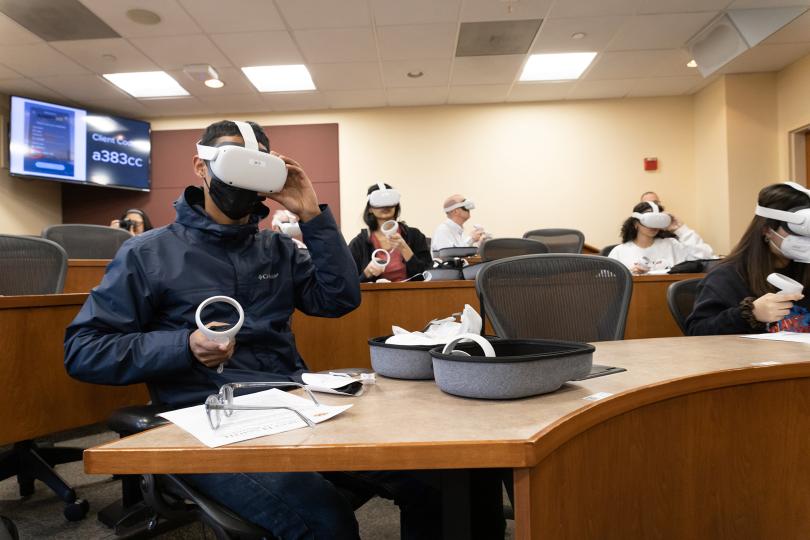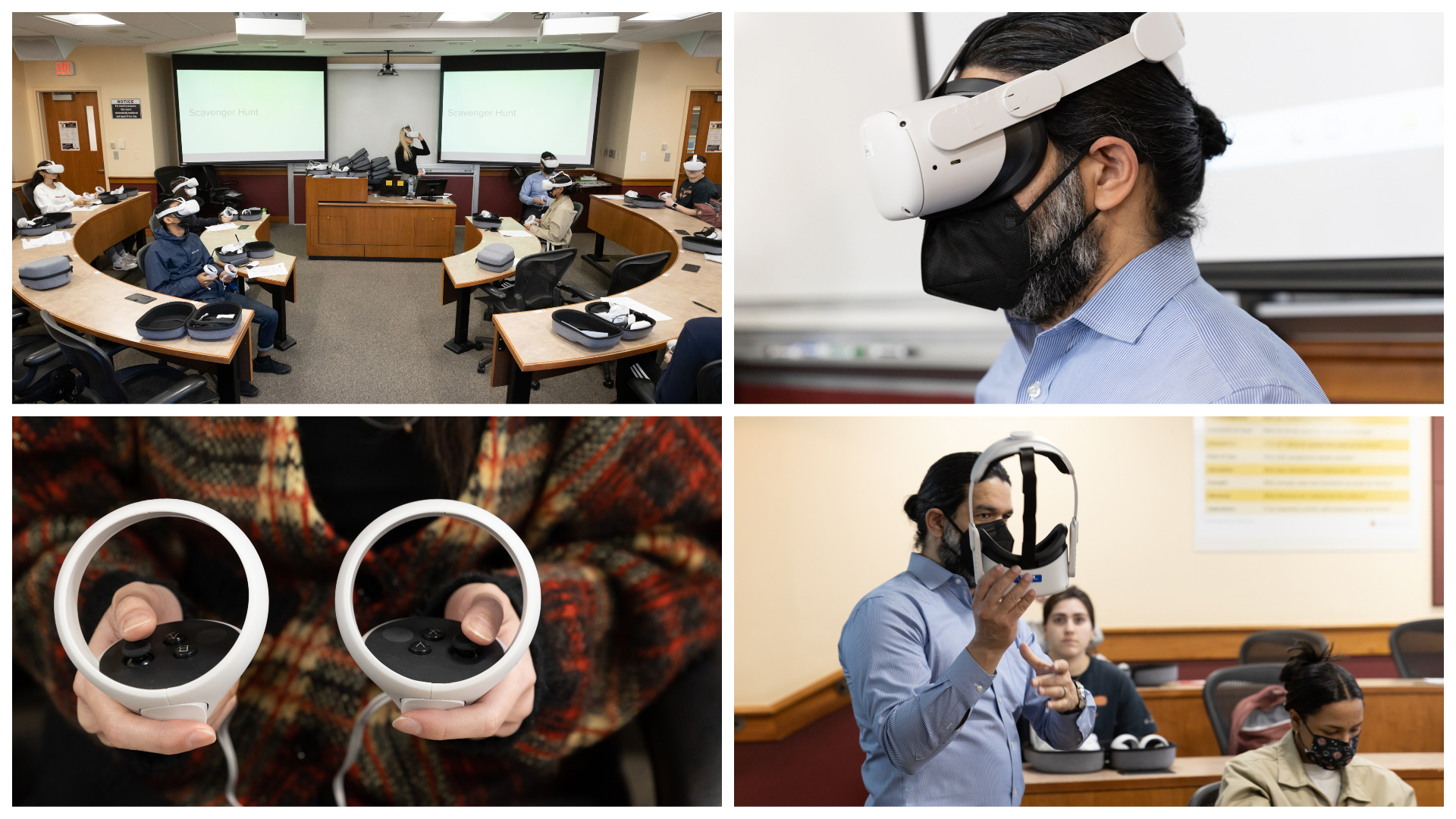
Students studying supply chain management at the University of Maryland’s Robert H. Smith School of Business are learning their way around a warehouse – without even having to leave their dorm rooms.
The Smith School’s Humberto Coronado is reimagining the way undergraduate supply chain students learn about warehouse management, using virtual reality technology for a completely new immersive learning experience.
Thanks to a University of Maryland Teaching and Learning Innovation grant, Coronado was able to buy 45 pairs of VR headsets and adapt an existing supply chain management course to include an experiential learning module driven by immersive technology. He won the grant last summer as one of the 90 projects to receive funding in the university’s multimillion-dollar commitment to transform teaching and learning. Coronado is the academic director of the Master of Science in Supply Chain Management program and teaches both undergrad and graduate students and hopes to eventually also use the technology with master’s students.
“Using VR is a game-changer for the way we can teach many supply chain concepts,” says Coronado, who had never used the technology before getting the grant to buy the goggles. He worked with an outside company to design the virtual warehouse space where his students will use the technology to explore and learn.
Students received the VR goggles and accompanying handheld controllers on Feb. 10, experiencing the virtual reality platform together – many for the first time. They learned the basics of how to use the technology in class, and each student got to take a set with them for the month-long series of learning modules they’ll be completing both individually and in teams. Outside of class, teams will agree on meeting times, when they’ll put on their VR goggles wherever they are – at home, in their dorm room, anywhere – and meet up in the virtual warehouse together to complete assignments.

“Before this technology, I would have to stand in class and ask students to imagine walking into a distribution facility. But how can I ask my students to imagine something they’ve never seen?” Coronado says. “This technology allows me to get rid of the ‘imagine’ and say, ‘Put on your goggles, go into this facility.”
So what do they see when they put on the headsets? They’re in a huge distribution warehouse together, where they see each other’s avatars and, using the handheld controller, they’re able to move around, interact with each other and assess the facility together. In some cases, they’ll be pinpointing problems – like safety hazards or inefficiencies that could cause slow-downs and mistakes – and how to fix them.
After trying the headsets for the first time, Coronado’s students were surprised at just how realistic the virtual world felt.
“It gave a totally different perspective than just watching a video,” said Krystal Taveras ’24. “I’m really excited about how much learning I’m going to be able to do. I’m a supply chain major and I think it’s going to be really beneficial for me to get a real look at what companies use and what they do.”
Anthony Marcelli ’24 is also excited for the learning opportunity and how it might help prepare him for a career. “I’ve talked to a lot of different employers and recruiters in supply chain and 90% of what you learn happens in the warehouse, hands-on, in-person, and that’s just something you don’t get sitting in a classroom,” he said. “I think this is just going to give us some opportunities that we never would have had before.”
Coronado said that’s really the goal – for students to use the experience to help get the jobs they want when they graduate.
“They will be prepared with a higher level of knowledge and capabilities – far beyond what they can get just from a textbook,” he says. “They’ll be able to go into a job interview with real examples from these facilities.”
Coronado says large companies with logistics and distribution operations – such as Amazon, DHL – are already using this kind of technology to train their employees and Smith students will have a leg up when entering the job market.
“They are going to be exposed to these technologies that are driving this field and they will get an idea of the new skill sets that are required.”
Coronado hopes future iterations of the course could include training content from companies to create a pipeline of students they could hire.
He says in the near future, many warehouse facilities are going to be fully automated, with no people inside the facility, where everybody will be sitting somewhere else doing everything from computers and using this VR technology.
“I want our students to see all the technologies that are playing into this new field that is growing so fast and requiring new skill sets. I want them to be exposed to that understanding that supply chain management is driven by technology. You can't do anything in supply chain management if it's not with technology.”
Media Contact
Greg Muraski
Media Relations Manager
301-405-5283
301-892-0973 Mobile
gmuraski@umd.edu
About the University of Maryland's Robert H. Smith School of Business
The Robert H. Smith School of Business is an internationally recognized leader in management education and research. One of 12 colleges and schools at the University of Maryland, College Park, the Smith School offers undergraduate, full-time and flex MBA, executive MBA, online MBA, business master’s, PhD and executive education programs, as well as outreach services to the corporate community. The school offers its degree, custom and certification programs in learning locations in North America and Asia.